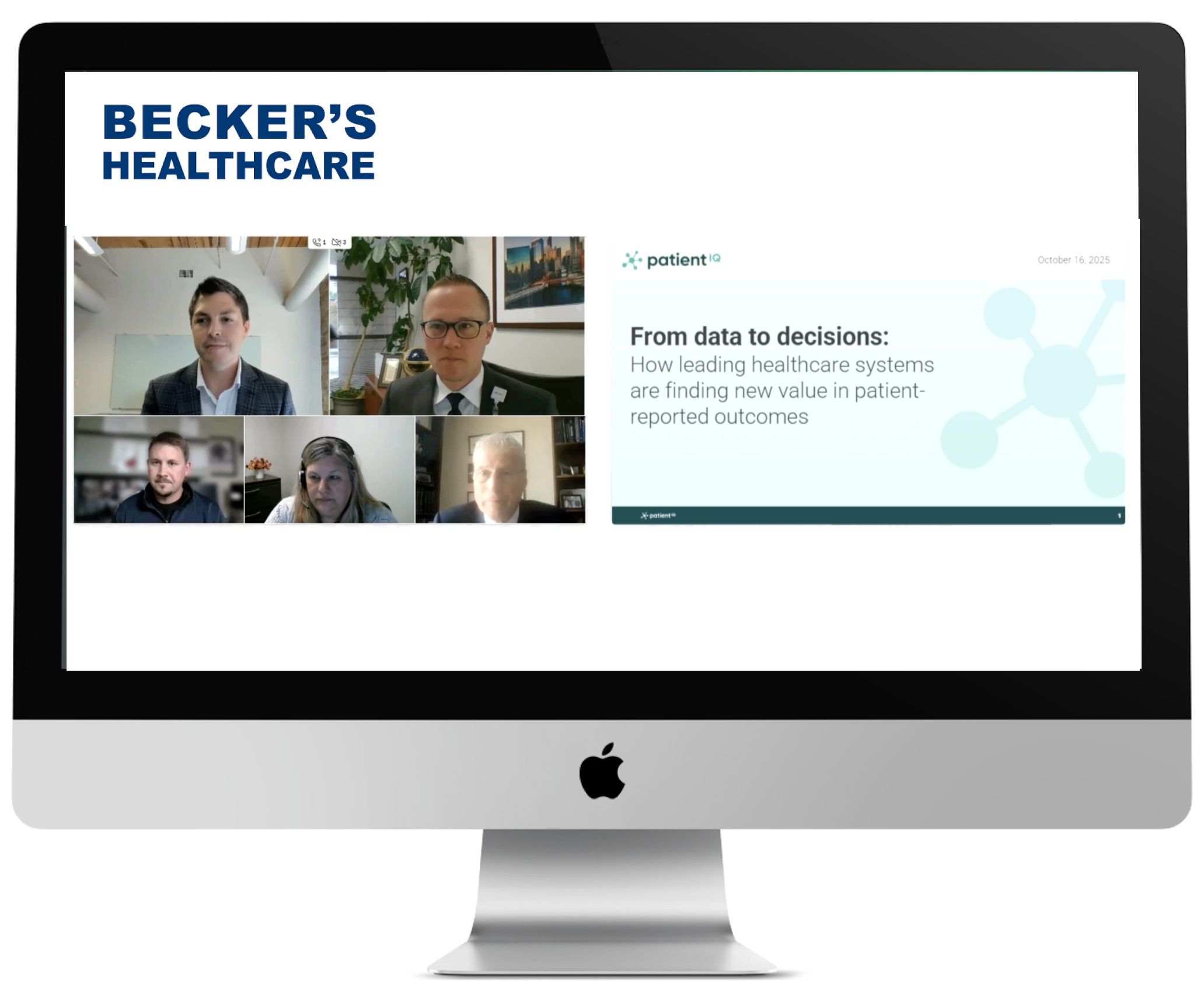How MU Health Care Prioritizes Patient Compliance in Patient-Reported Outcome Collection
The ability to leverage patient-reported outcomes (PROs) data is directly dependent upon patient participation. If patients do not self-report, the...
Seamlessly deploy a scalable, EHR-integrated patient-reported outcomes (PRO) program to enhance patient insights and performance
Rapidly deploy clinical studies and registries on the EDC platform preferred by investigators
Prove your value by benchmarking your PROs against PatientIQ’s industry-leading real-world PRO dataset
Unparalleled expertise to help you leverage outcomes data and meet your clinical and operational objectives
While patient-reported outcomes are increasingly recognized as essential for delivering patient-centric care, they require generating high compliance among patients – and that has shown to be an often-elusive task.
As in most industries, it is difficult to consistently engage the consumer. With patient-reported outcomes, studies have shown compliance rates vary depending upon the type of treatment provided and its purpose.
For example, one study showed that, among patients who received shoulder arthroplasty, PRO compliance rates were 72% at baseline, 47% after one year, and 33% at the two-year mark. In contrast, a study of clinical trials showed an overall compliance rate of 93.1%. However, despite this variation, academic journals largely accept 80% compliance at two years post-intervention as the “gold standard” for patient-reported outcome compliance.
80% compliance can be difficult to achieve – and even more challenging to maintain. To achieve high compliance, healthcare organizations should implement our top 10 tactics, three of which we share below.
There are 10 tactics we recommend for improving patient compliance. The three discussed below, we feel, are essential for success:
A study published in JAMA Network Open concluded that engaged physicians and administrators are essential for increasing the collection of patient-reported outcomes. A study of 205 clinics in Massachusetts showed that healthcare systems that want to implement PRO programs should focus on clinician and administrative engagement to maximize their chances of success.
As previously described, compliance rates increase when physicians are engaged in the process. Patients are more likely to comply with requests to complete PRO questionnaires when they understand what they are and why they are important – and hear the request come directly from their provider.
When The Commonwealth Fund looked at patient-reported outcomes, it concluded that one of the obstacles to their successful use is that physicians cannot bill for the time they spend compiling data or interpreting their results. Staff members at many providers are overworked, and clinicians are stretched thin.
Successful utilization of patient-reported outcomes is unlikely if compliance depends on manual processes, such as sending manual reminders or manually contacting patients to provide responses. The process of collecting PROs should be automated to maximize the chances of success.
When it comes to patient-reported outcomes, there is no single thing providers can do to maximize compliance and guarantee meaningful results – especially when healthcare burnout remains high.
So how can providers implement a meaningful PRO program without overburdening staff? The answer lies in a Patient-Reported Outcomes Measures (PROM) platform that can automate the collection, measurement, and analysis of patient outcomes data.
While different providers may have varying needs from a PROM platform, we outline essential platform features for generating high compliance in our eBook, Top 10 Tactics to Improve Patient-Reported Outcome Compliance.
The ability to leverage patient-reported outcomes (PROs) data is directly dependent upon patient participation. If patients do not self-report, the...
Key Takeaways Experts say capturing the patient voice is essential for cancer care Patient-reported outcomes collection is a vehicle for...

In healthcare, value has long been defined as outcomes over cost. But as PatientIQ CEO Matt Gitelis explained during a recent Becker’s Healthcare...